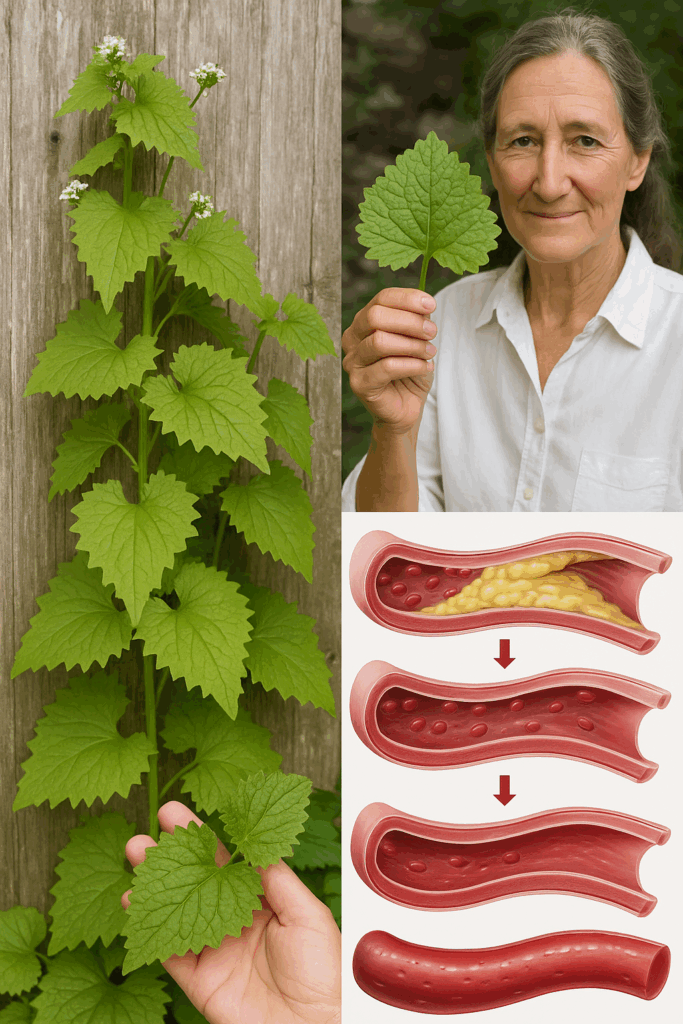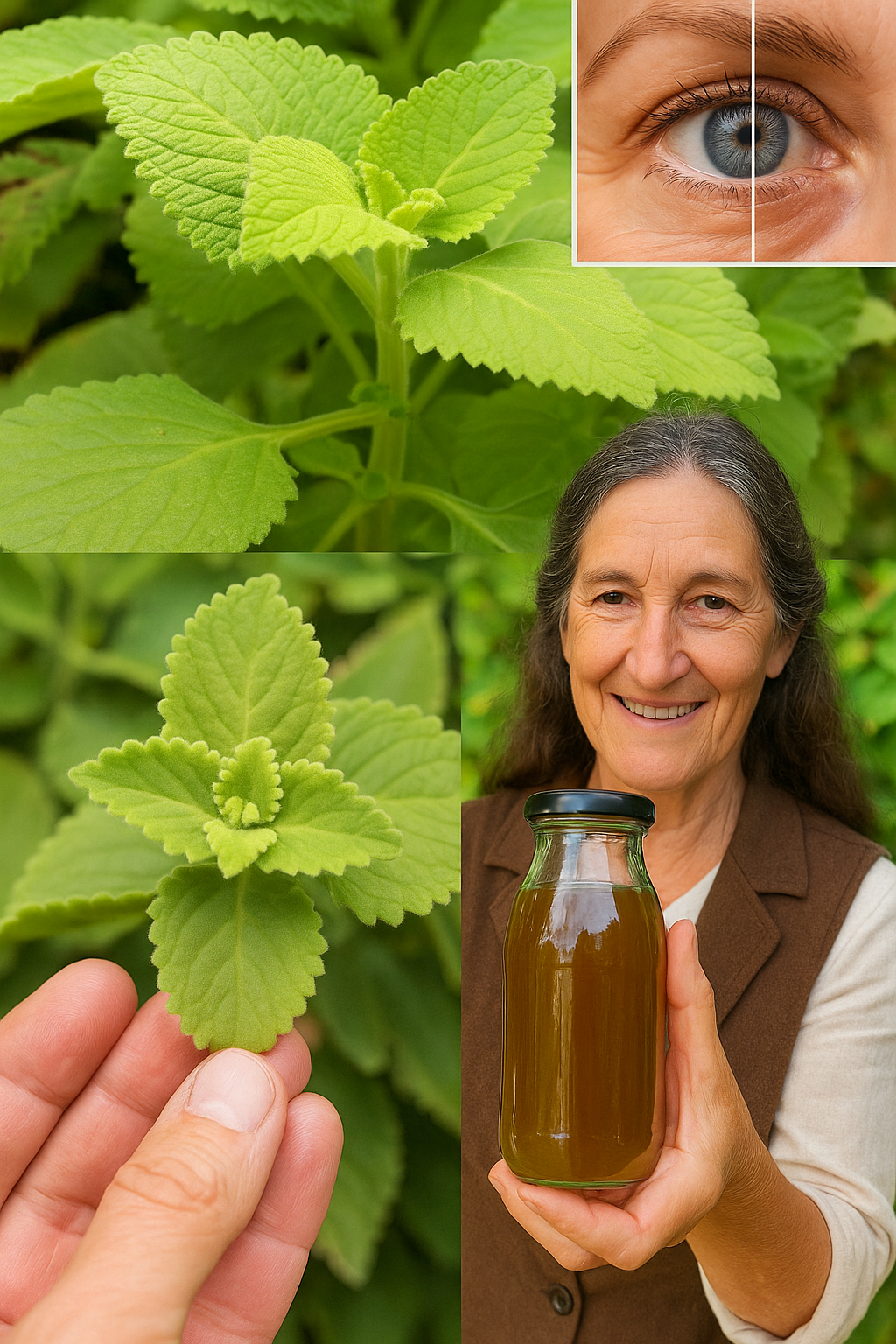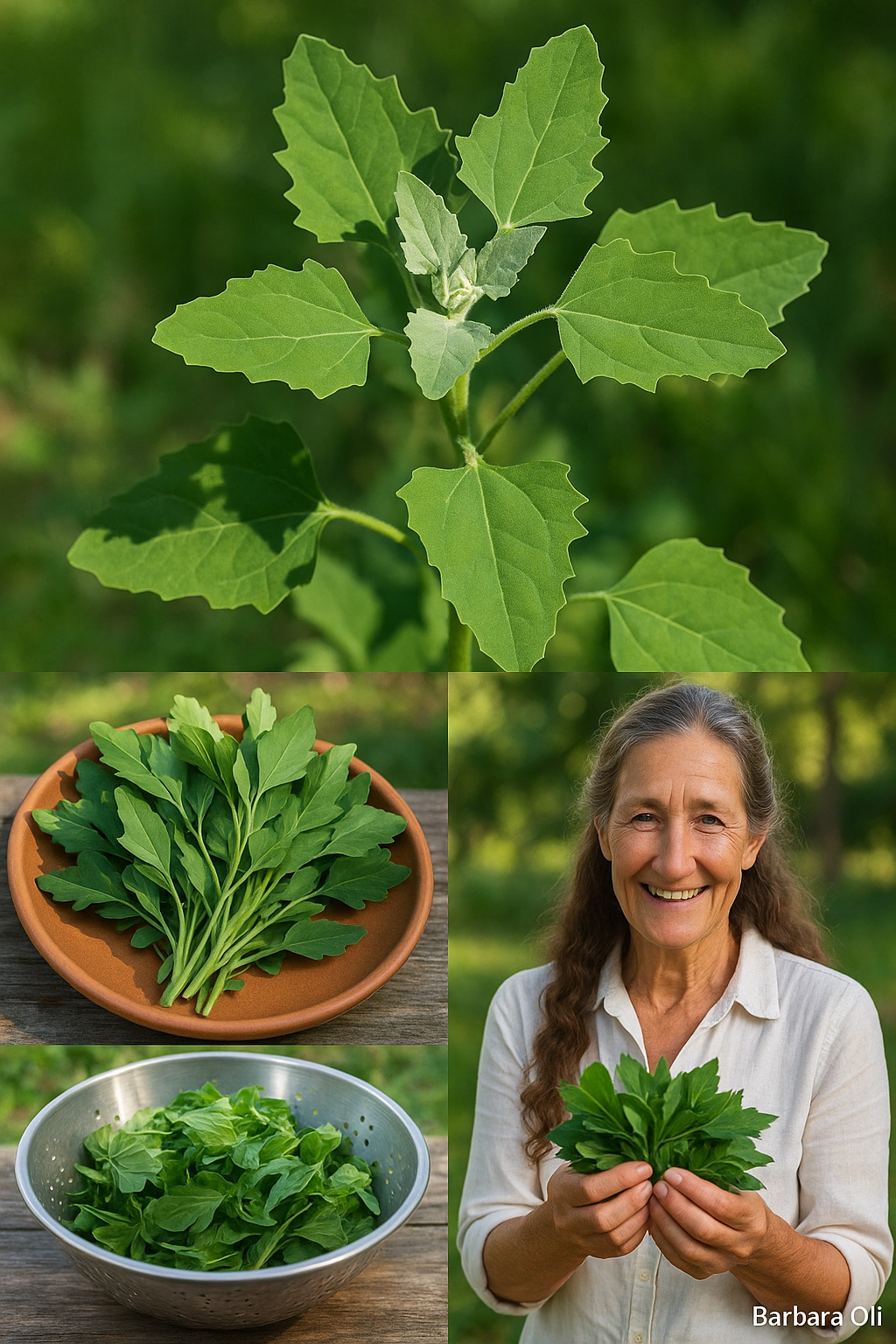Often seen growing freely along forest edges and garden fences, garlic mustard (Alliaria petiolata) is more than just an invasive plant — it’s a nutritional powerhouse with a long history in herbal medicine and wild foraging traditions.
This unassuming green herb, known for its subtle garlic aroma and mustard-like tang, offers a rich array of benefits for the immune system, skin, digestion, and even joint health. Whether consumed raw, brewed into tea, or used topically, garlic mustard can be a gentle but effective addition to your natural wellness toolkit.
Here’s why you should take a second look at this wild leaf — and how to use it to your advantage.

🍋 1. Rich Source of Vitamin C for Immunity and Skin Health
Garlic mustard leaves are loaded with vitamin C, a vital antioxidant that supports the immune system, encourages collagen production, and helps defend the skin from oxidative stress.
If you’re looking for a natural way to boost your resistance to seasonal illness or promote glowing, youthful skin, this plant offers a convenient, foraged option.
How to use: Add fresh garlic mustard leaves to your salads, smoothies, or herb pestos for a sharp, citrusy-green flavor and a healthy immune kick.
🔥 2. Natural Anti-Inflammatory Properties
One of the most traditional uses of garlic mustard is for reducing inflammation, especially in muscles and joints. Thanks to its natural compounds such as glucosinolates and flavonoids, the plant has been used both internally and externally to help calm swelling and pain.
It may be particularly useful for those suffering from joint stiffness, mild arthritis, or muscular tension.
Topical tip: Mash fresh leaves into a poultice and apply to sore joints or bruises for a cooling, anti-inflammatory effect.
🌱 3. Gentle Detoxification and Digestive Aid
Like many wild greens, garlic mustard helps stimulate digestion and supports the liver’s detoxifying function. It can act as a mild diuretic and digestive tonic, helping to eliminate excess waste and soothe the gut.
This makes it especially useful in spring cleansing routines or as part of a daily herbal tea regimen to support internal balance.
How to enjoy: Brew a tea with a few fresh leaves steeped in hot water for 5–10 minutes. Drink in the morning for a light digestive boost.
🛡️ 4. Antibacterial and Antifungal Defense
Garlic mustard doesn’t just taste pungent — its sulfur-rich compounds give it natural antimicrobial properties, making it helpful in defending the body against minor infections.
Historically, herbalists have used garlic mustard for minor cuts, wounds, or fungal conditions, applying crushed leaves directly to the skin to cleanse and protect the area.
Note: Always test on a small area of skin before topical use to avoid irritation.
🥬 5. Foraged Nutrition That’s Free and Abundant
Besides vitamin C, garlic mustard contains vitamin A, fiber, calcium, magnesium, and iron, making it a highly nutritious wild green. Unlike cultivated greens that lose nutrients through storage and transport, garlic mustard can be picked fresh, ensuring you receive its full nutritional profile.
The best part? It’s often growing right in your backyard or local forest trail — and harvesting it actually helps the environment by reducing its invasive spread.
💚 How to Identify Garlic Mustard Safely
Before using garlic mustard, it’s crucial to correctly identify the plant:
- Leaves are heart-shaped, slightly scalloped, and smell faintly of garlic when crushed.
- Stems are slender, upright, and can reach 1 to 3 feet tall.
- Flowers (in spring) are small, white, and have four petals in a cross shape.
- Location: Common in shaded woods, garden edges, or disturbed soil areas.
Always forage responsibly and only from clean, pesticide-free areas.
🥗 Creative Ways to Use Garlic Mustard in the Kitchen
- In salads: Use young, tender leaves to add a peppery bite to mixed greens.
- As a pesto: Blend with nuts, lemon, olive oil, and garlic for a wild twist on traditional pesto.
- In soups and broths: Toss into the pot at the end of cooking for a vitamin-rich boost.
- In teas: Combine with mint or lemon balm for a refreshing herbal blend.
📦 Storage Tip: Store fresh leaves in a sealed container in the refrigerator. Use within a few days for best flavor and potency.

⚠️ Precautions Before Use
While garlic mustard is safe for most people in small, culinary amounts:
- Those with thyroid issues should moderate intake due to goitrogenic compounds (like many brassica-family plants).
- Pregnant or breastfeeding women should consult a professional before using medicinally.
- Always harvest responsibly, making sure not to mistake it for other similar-looking plants.
🌟 Final Thought: A Wild Weed with Wellness in Every Leaf
Garlic mustard is a perfect example of how the plants we often ignore or remove from our gardens are actually filled with medicinal and nutritional value. Far from being a useless weed, it’s a vibrant green ally waiting to be discovered — one that offers a fresh flavor, free nutrition, and centuries of healing tradition.
Whether you sip it, cook it, or use it on your skin, garlic mustard is a gentle but potent reminder that the wild world is still full of secrets — and health is often growing quietly, right under our feet.


